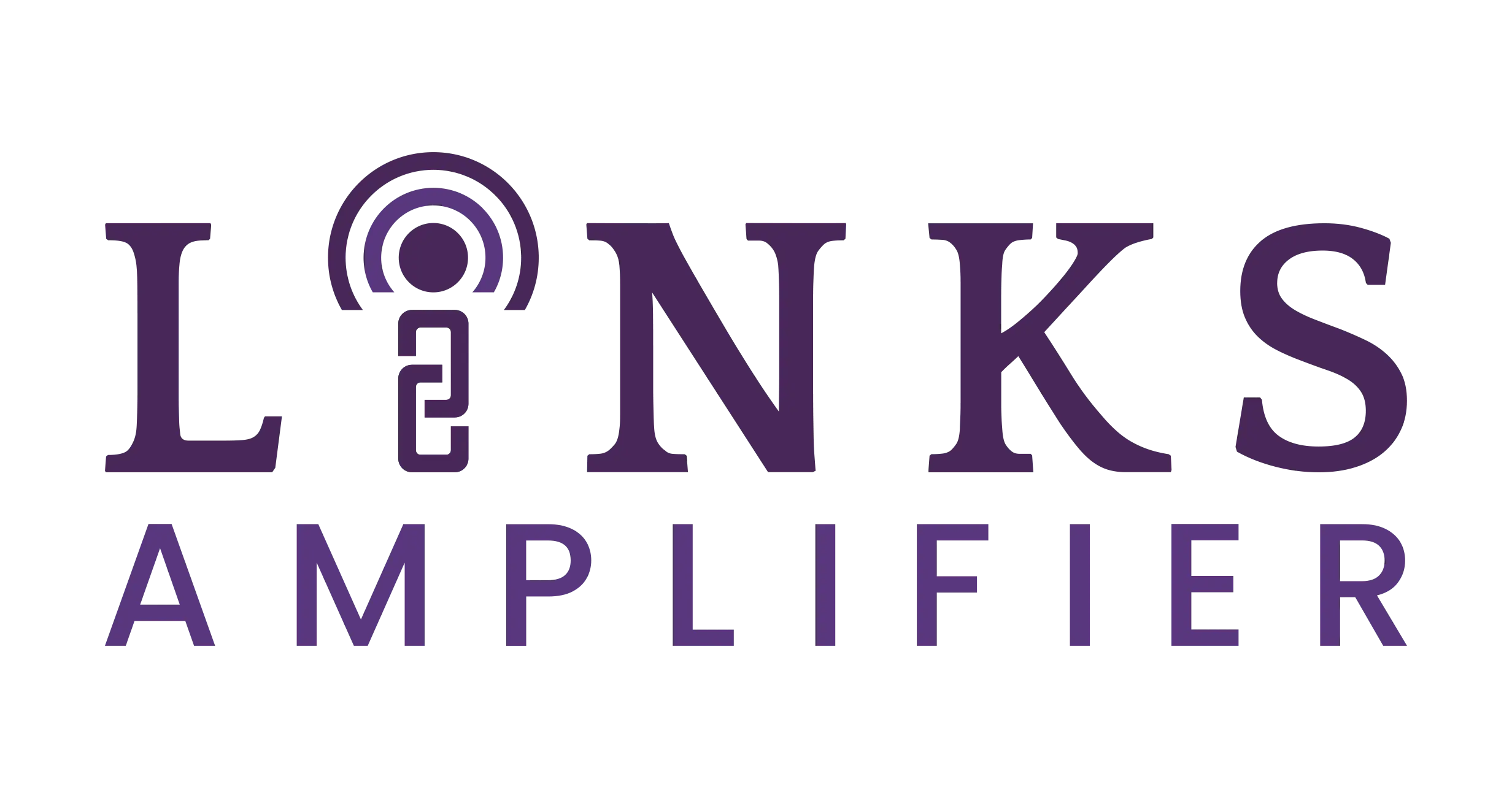SaaS link building is an intriguing yet challenging venture for every SEO team. It involves numerous tactics, failures, and extensive hours dedicated to crafting the perfect link building strategy for your business. Ultimately, your SaaS website will either rise or fall in search rankings.
We’ve compiled effective link-building strategies to help you succeed. Replicate these tactics to enhance your link profile and witness significant growth.
Ready to elevate your link building game? Let’s dive in!
What is SaaS Link Building?
SaaS link building involves acquiring high-quality backlinks from relevant websites to your own. Backlinks are one of the three key ranking factors for search engines. The more quality and relevant domains pointing to your site, the more trust Google assigns to you, leading to higher rankings in the SERPs.
Why is Link Building Important for SaaS Companies?
Cracking the SERP is nearly impossible without a decent number of backlinks. Competitive niches require good technical SEO, great content, and quality backlinks to secure top positions.
For search engines, it doesn’t matter whether you’re a SaaS company or an e-commerce site. Google evaluates your site’s topical relevance, content depth, and the number of authoritative websites linking to your pages. These factors, along with over 200 other ranking factors, determine your ranking.
Link Building Strategies for SaaS Companies
Unlock the potential of backlinks to propel your SaaS to new heights. Discover proven strategies to attract high-quality links from authoritative sources and improve your organic search visibility.
Discover Broken Links
- How: Use tools like Ahrefs, SEMrush, or Check My Links to find broken links (404 errors) on websites that are relevant to your niche. Then, reach out to the website owner and suggest your content as a replacement for the broken link.
- Why: Broken link building is a win-win situation. You help the website owner fix a broken link, and you get a valuable backlink in return.
- Example: If a blog post about project management software links to a tool that no longer exists, you could offer your project management software as a replacement.
Claim Unlinked Brand Mentions
- How: Use tools like Google Alerts, Mention, or Brand24 to monitor mentions of your brand. When you find an unlinked mention, politely reach out to the website owner or author and ask them to add a link to your website.
- Why: This is a low-effort, high-reward strategy, as you’re essentially turning existing brand awareness into valuable backlinks.
- Example: If a tech blog mentions your company’s new product launch without a link, you can email the author and ask them to include a link to your product page.
Publish Linkable Assets
- How: Create high-quality content that people will naturally want to link to. This could include original research, case studies, infographics, or comprehensive guides.
- Why: Linkable assets are like magnets for backlinks. They provide value to your target audience, and they’re often shared and referenced by other websites.
- Example: A case study showing how your SaaS product helped a customer achieve significant results, or an infographic illustrating industry trends, could both attract backlinks.
Get Links from Relevant Resource Pages
- How: Find resource pages (e.g., “best marketing tools” or “top productivity apps”) that are relevant to your niche. Reach out to the page owner and ask if they would be willing to add your SaaS product to their list.
- Why: Resource pages are often highly trafficked, and getting listed on one can send a steady stream of referral traffic to your website.
- Example: If you offer a social media analytics tool, you could reach out to blogs that publish lists of the best social media tools and ask to be included.
Find Link Prospects with Reverse Image Search
- How: Use Google Reverse Image Search or TinEye to find websites that are using your images without permission. Reach out to them and ask for proper attribution with a link back to your website.
- Why: This is a good way to reclaim backlinks that you might not even know you were missing out on.
- Example: If someone uses your company logo on their website without linking back to you, you can use reverse image search to find them and request a link.
Create Free Tools
- How: Develop a free tool relevant to your target audience and promote it through social media, blog posts, and email marketing.
- Why: Free tools are a great way to attract backlinks and generate organic traffic. People love free stuff, and they’re often willing to share and link to useful tools.
- Example: A social media scheduling tool, a website speed test tool, or a content idea generator are all examples of free tools that could attract backlinks for a SaaS company.
Leverage Expert Roundups
- How: Participate in expert roundups, where a group of industry experts are asked to share their opinions on a particular topic. Look for opportunities to contribute to or create your own expert roundups.
- Why: Expert roundups are a great way to get your name and company in front of a wider audience. They can also lead to valuable backlinks from the websites that publish them.
- Example: If you’re an expert in SEO, you could participate in a roundup of SEO tips for small businesses.

Give Interviews
- How: Reach out to journalists, bloggers, and podcasters who cover your industry and offer to be interviewed.
- Why: Interviews are a great way to share your expertise and build relationships with influential people in your industry. They can also lead to backlinks and media coverage.
- Example: If you’ve developed a new AI-powered marketing tool, you could offer to be interviewed on a podcast about AI in marketing.
Give Testimonials
- How: If you use other SaaS products, offer to write a testimonial for them in exchange for a backlink to your website.
- Why: Testimonials are a quick and easy way to get backlinks from high-authority websites.
- Example: If you use CRM software to manage your customer relationships, you could write a testimonial for the CRM company’s website in exchange for a backlink.
Reposition Your Backlinks
- How: Analyze your backlinks and identify any links that are pointing to your homepage that could be better directed to a more relevant page on your website. Reach out to the website owners and ask them to update the link.
- Why: Repositioning your backlinks can help to improve the SEO of your inner pages and drive more relevant traffic to your website.
- Example: If a backlink is pointing to your homepage but the anchor text is “customer success software,” you could ask the website owner to change the link to point to your customer success product page.
Contact Reporters through HARO
- How: Sign up for HARO (Help a Reporter Out), now Connectively, and monitor their daily emails for relevant queries from journalists. Respond to queries with helpful quotes or insights, and you could get featured in major publications.
- Why: HARO is a great way to get media coverage and backlinks from authoritative news sources.
- Example: If a journalist is writing an article about the future of work, you could respond to their HARO query with your thoughts on how remote work is changing the workplace.
Do Outreach for Guest Posting
- How: Identify high-quality blogs and websites that accept guest posts. Pitch your guest post ideas to the editors, and be sure to include a link back to your website in your author bio.
- Why: Guest posting is a great way to get your content in front of a new audience and build backlinks from high-authority websites.
- Example: If you offer a sales enablement platform, you could write a guest post for a sales blog about how to use sales enablement to increase sales productivity.
Use the Skyscraper Technique
- How: Find popular content in your niche, create something even better, and then reach out to websites that linked to the original content and ask them to link to your improved version.
- Why: The Skyscraper Technique is a proven way to get high-quality backlinks.
- Example: If you find a popular blog post about the best project management tools, you could create a more comprehensive and up-to-date list and then reach out to the websites that linked to the original post.
Take Advantage of Product Embeds
- How: Allow users to embed parts of your product on their websites. This could include widgets, calculators, or interactive demos.
- Why: Product embeds can generate backlinks from the websites that embed them. They can also help you reach a wider audience and increase brand awareness.
- Example: If you offer a social media analytics tool, you could allow users to embed a widget on their websites that displays their social media stats.
Leverage Your Integration Partners
- How: Partner with other companies to integrate your products. Announce these integrations on your blog and social media, and encourage your partners to do the same.
- Why: Integration partnerships can lead to backlinks from your partners’ websites, as well as co-marketing opportunities.
- Example: If you offer CRM software, you could partner with an email marketing platform to create a seamless integration between the two products.

Harness the Power of Podcasts
- How: Look for podcasts that are relevant to your niche and pitch yourself as a guest.
- Why: Podcasts are a great way to reach a new audience and build relationships with podcast hosts and listeners. Many podcasts also include links to guest websites in their show notes.
- Example: If you’re a SaaS company that helps businesses manage their finances, you could pitch yourself as a guest on a podcast about financial management for small businesses.
Be a Speaker at Online Conferences
- How: Speak at virtual conferences and webinars that are relevant to your niche.
- Why: Speaking at conferences can help you establish yourself as a thought leader and build relationships with other industry experts. It can also lead to backlinks from the conference website and social media mentions.
- Example: If you’re a SaaS company that helps businesses with cybersecurity, you could speak at a virtual conference about cybersecurity threats and trends.
Create Thought Leadership Content
- How: Publish in-depth blog posts, white papers, or ebooks that offer unique insights and perspectives on your industry.
- Why: Thought leadership content can help you attract backlinks from other websites that are looking for authoritative sources of information.
- Example: A comprehensive guide to marketing automation or a white paper on the future of cloud computing could both be considered thought leadership content.
Host a Virtual Summit or Webinar Series
- How: Partner with other industry experts to host a virtual summit or webinar series. Promote the event through your website, social media, and email marketing.
- Why: Virtual events can generate a lot of buzz and backlinks. They can also help you build relationships with other industry leaders and position your company as a thought leader.
- Example: If you’re a SaaS company that helps businesses with marketing, you could host a virtual summit on the latest marketing trends.
Encourage Others to Review Your Product
- How: Reach out to bloggers, influencers, and industry publications and offer them free access to your product in exchange for an honest review.
- Why: Product reviews can be a valuable source of backlinks and social proof. They can also help you reach a wider audience and generate leads.
- Example: If you offer a project management tool, you could offer free access to project management bloggers in exchange for a review on their website.
Encourage User-Generated Content
- How: Create a hashtag or contest to encourage users to share their experiences with your product on social media. You can also offer incentives for users who create tutorials or reviews of your product.
- Why: User-generated content can be a powerful form of marketing and can lead to backlinks from social media and other websites.
- Example: If you offer a graphic design tool, you could create a contest for users to share their best designs created with your tool.
By combining these strategies and tailoring them to your specific SaaS product and target audience, you can build a strong backlink profile that will boost your website’s authority and organic search rankings.
Advanced SaaS Link Building Tips
Level up your link building game with these advanced strategies that go beyond the basics, ensuring your backlinks are not only plentiful but also impactful.
Evaluate Your Link Prospects
- Go Beyond Domain Authority (DA): While DA is a good indicator, it’s not the only factor. Consider the website’s relevance to your niche, the quality of its content, and its audience engagement. A high-DA website with irrelevant content or a low engagement rate might not be as valuable as a lower-DA website with highly targeted content and an active community.
- Assess Link Placement: The placement of your backlink on a page can affect its value. A link within the main content of a high-quality article is generally more valuable than a link in a sidebar or footer. Aim for backlinks in contextually relevant sections of authoritative articles.
- Analyze Traffic and Referral Potential: Look for websites with high traffic volumes and substantial overlap with your target audience. A backlink from a website with relevant traffic can drive qualified leads to your SaaS product.
- Prioritize “Do-Follow” Links: Do-follow links pass link equity and directly contribute to your website’s search engine rankings. While no-follow links can still be valuable for brand awareness and traffic, focus on acquiring do-follow links from high-authority websites.
Diversify Your Link Profile
- Blend Do-Follow and No-Follow Links: A natural link profile includes both do-follow and no-follow links. While do-follow links are essential for SEO, no-follow links can still drive referral traffic and contribute to brand visibility. Aim for a healthy mix of both types of links.
- Vary Anchor Text: Over-optimization of anchor text (using the same keyword repeatedly) can trigger search engine penalties. Instead, use a variety of anchor texts, including:
- Branded terms (e.g., “Your Company Name”)
- Naked URLs (e.g., “https://www.yourcompany.com“)
- Generic phrases (e.g., “click here,” “learn more”)
- Long-tail keywords (e.g., “best project management software for small teams”)
- LSI keywords (semantically related keywords, e.g., “project management,” “task tracking,” “collaboration”)
- Build Links from Different Sources: Don’t rely on a single link-building tactic. Diversify your approach by building links from various sources, including:
- Blogs
- News websites
- Industry publications
- Resource pages
- Directories
- Social media
Use Different Types of Anchor Texts
- Match Anchor Text to Content: The anchor text should accurately describe the content it links to. For example, a link to a blog post about social media marketing should use anchor text like “social media marketing tips” or “how to improve social media engagement.”
- Avoid Over-Optimization: As mentioned earlier, using the same anchor text repeatedly can harm your SEO. Instead, use a variety of anchor texts that naturally fit the context of the linking page.
- Prioritize Relevance Over Exact Match: While it’s good to include some exact-match keywords in your anchor texts, don’t overdo it. Focus on using relevant phrases that accurately describe your content and entice users to click.
By applying these advanced tips, you can refine your link-building strategy and acquire high-quality backlinks that will drive targeted traffic, improve your search engine rankings, and ultimately contribute to the growth of your SaaS business.
Conclusion
SaaS link building requires creativity and a deep understanding of your niche. With this ultimate guide, you’re equipped to start building high-quality links and improving your SEO results. Experiment with different tactics and focus on the ones that yield the best results for your SaaS.
While the methods outlined in this guide provide a solid foundation, remember that not all backlinks are created equal. Prioritize quality over quantity, and focus on building relationships with authoritative websites in your niche.
If you’re struggling to dedicate the time and resources needed for effective link building, consider outsourcing this crucial aspect of your SEO strategy. By partnering with experts in SaaS link building, you can leverage their knowledge, experience, and established networks to achieve faster and more significant results.
This allows you to focus on your core business while reaping the benefits of a robust backlink profile that drives organic traffic, improves search rankings, and solidifies your SaaS.

Jinky Oblianda is the founder of Links Amplifier Digital. She has been building links for businesses and helping agencies for years before slowly starting her own agency.


